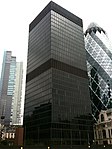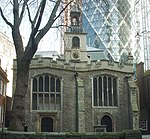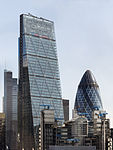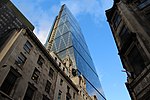1 Undershaft
1 Undershaft, informally known as 'The Trellis' due to its external cross bracing, is a skyscraper planned for the City of London financial district which was given approval in November 2016. The scheme has been developed by Aroland Holdings and designed by Eric Parry Architects. It is set to replace the St Helen's tower and upon completion will become the second tallest skyscraper in London, and the United Kingdom. The building is the second design for a skyscraper at 1 Undershaft, replacing a previous proposal designed by architects Avery Associates. The approved plans are also revised, reducing the height of the tower. Construction may not begin until several years after its approval date.
Excerpt from the Wikipedia article 1 Undershaft (License: CC BY-SA 3.0, Authors).1 Undershaft
Undershaft, City of London
Geographical coordinates (GPS) Address Nearby Places Show on map
Geographical coordinates (GPS)
| Latitude | Longitude |
|---|---|
| N 51.514242 ° | E -0.081583 ° |
Address
St. Helen's (Aviva Tower)
Undershaft 1
EC3A 8AH City of London
England, United Kingdom
Open on Google Maps







